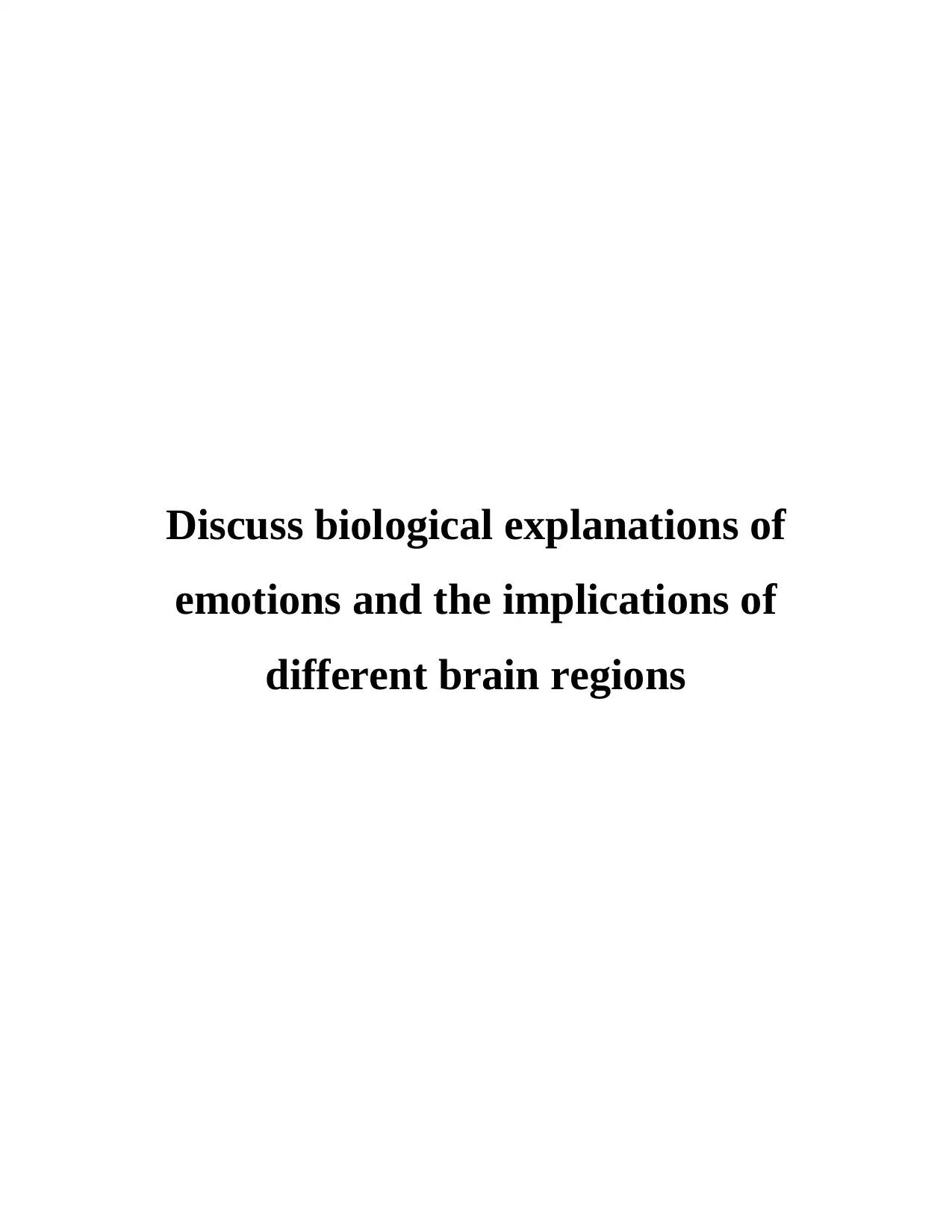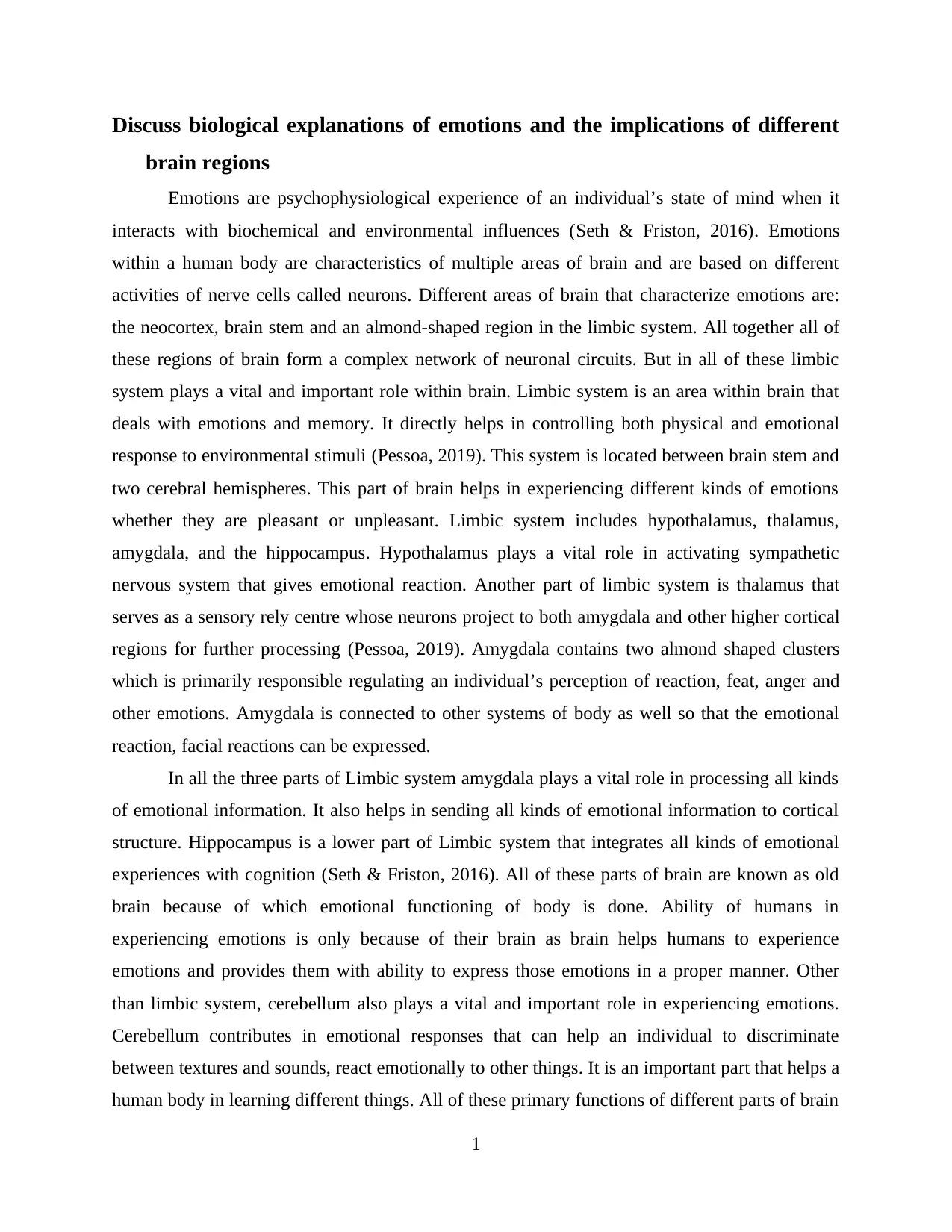Analyzing Biological Explanations of Emotions and Brain Structures
VerifiedAdded on 2022/12/30
|4
|671
|20
Essay
AI Summary
This essay delves into the biological explanations of emotions, focusing on the role of various brain regions. It highlights the importance of the limbic system, including the hypothalamus, thalamus, amygdala, and hippocampus, in processing and regulating emotional responses. The essay discusses how the amygdala is crucial for processing fear and other emotions, while the hippocampus integrates emotional experiences with cognition. It also touches upon the cerebellum's contribution to emotional responses. The essay emphasizes how these interconnected brain structures work together to allow humans to experience, express, and categorize emotions, differentiating between pleasant and unpleasant experiences and how these processes are related to the sympathetic nervous system. References to relevant academic sources such as books and journals are included to support the arguments made in the essay.
1 out of 4






![[object Object]](/_next/static/media/star-bottom.7253800d.svg)